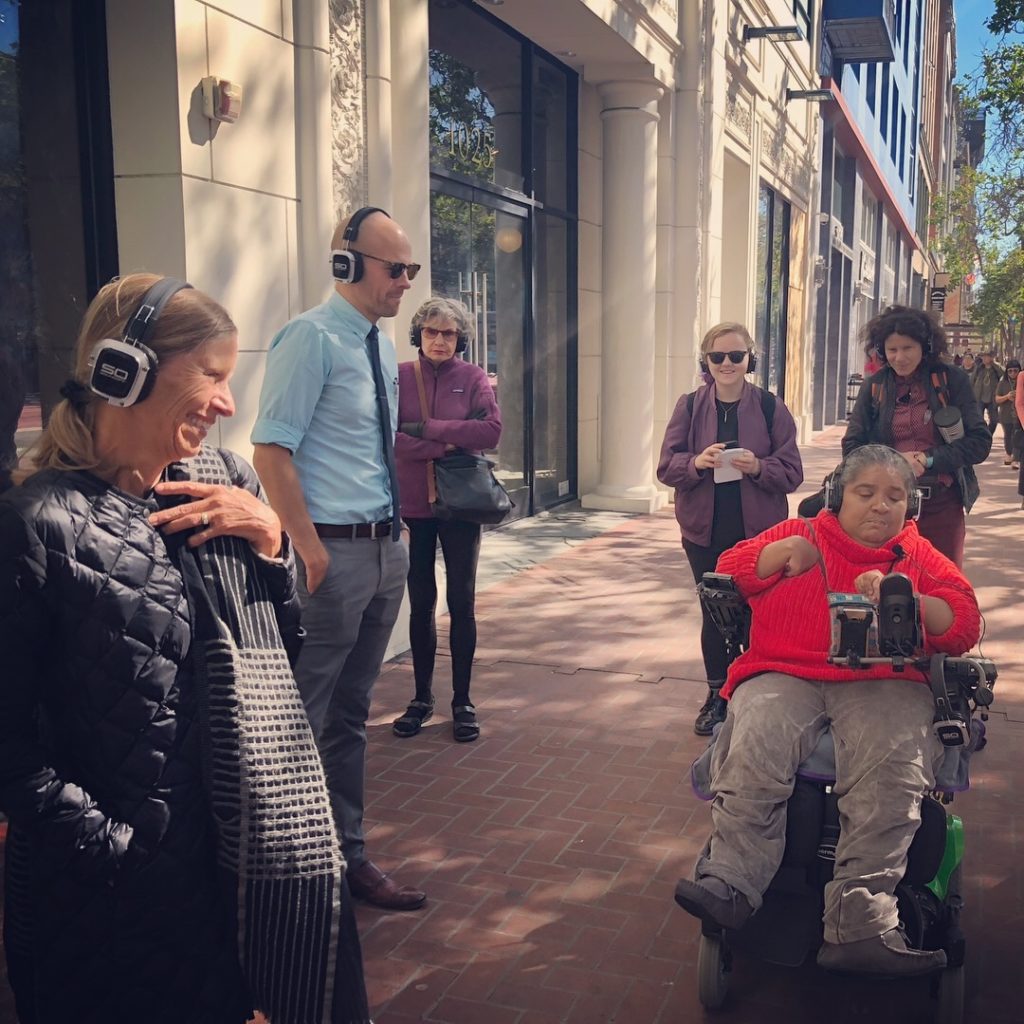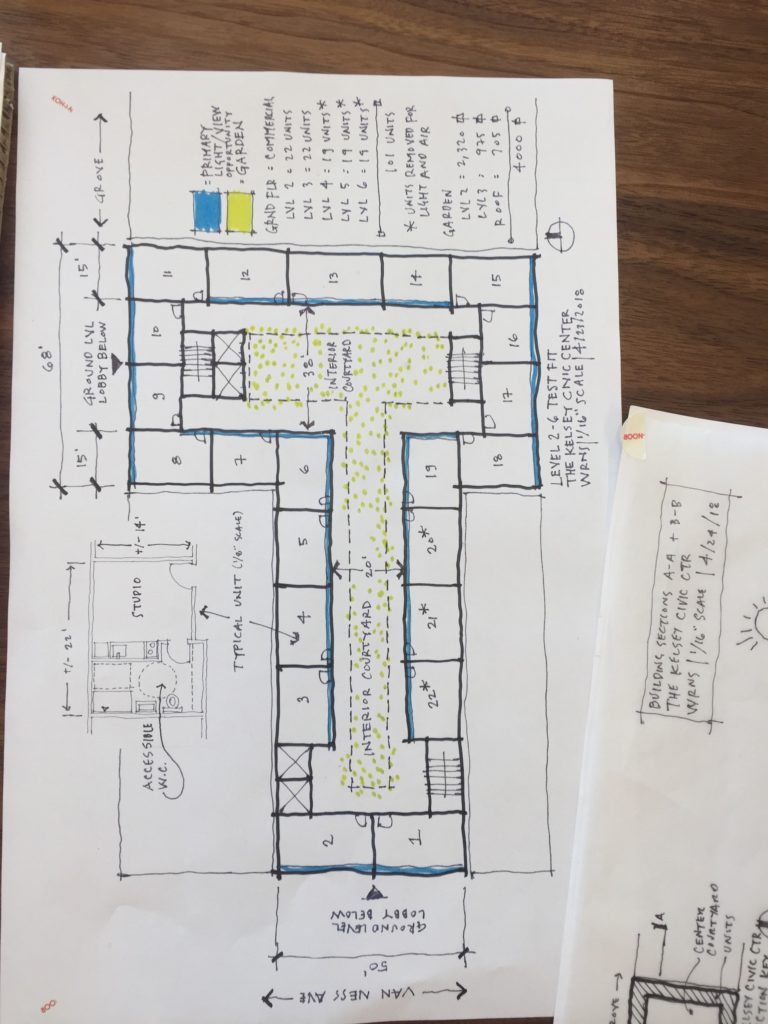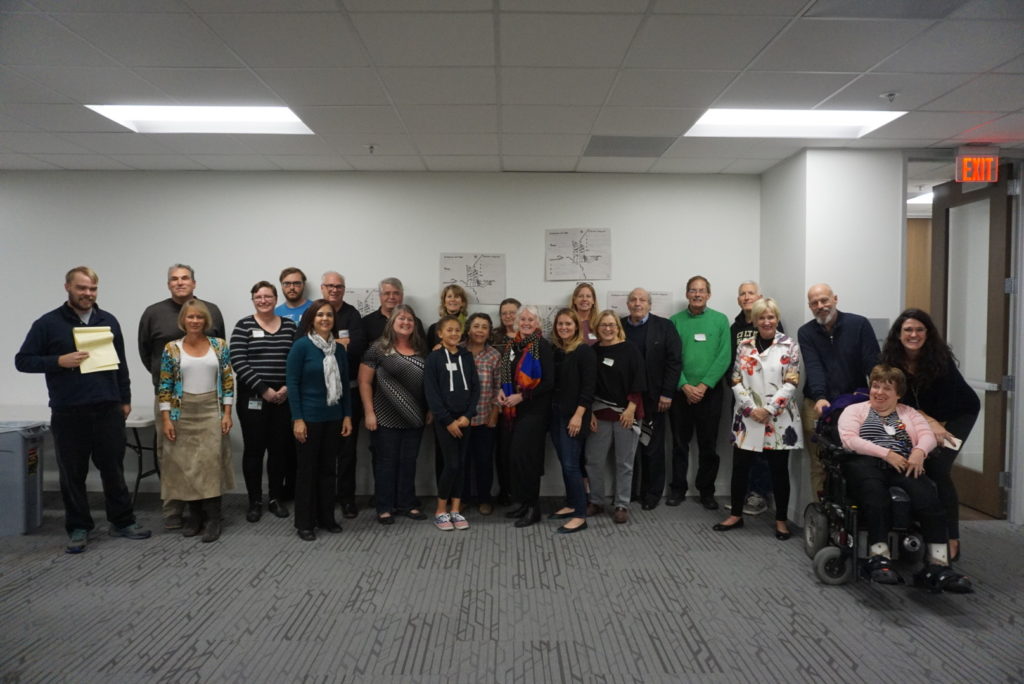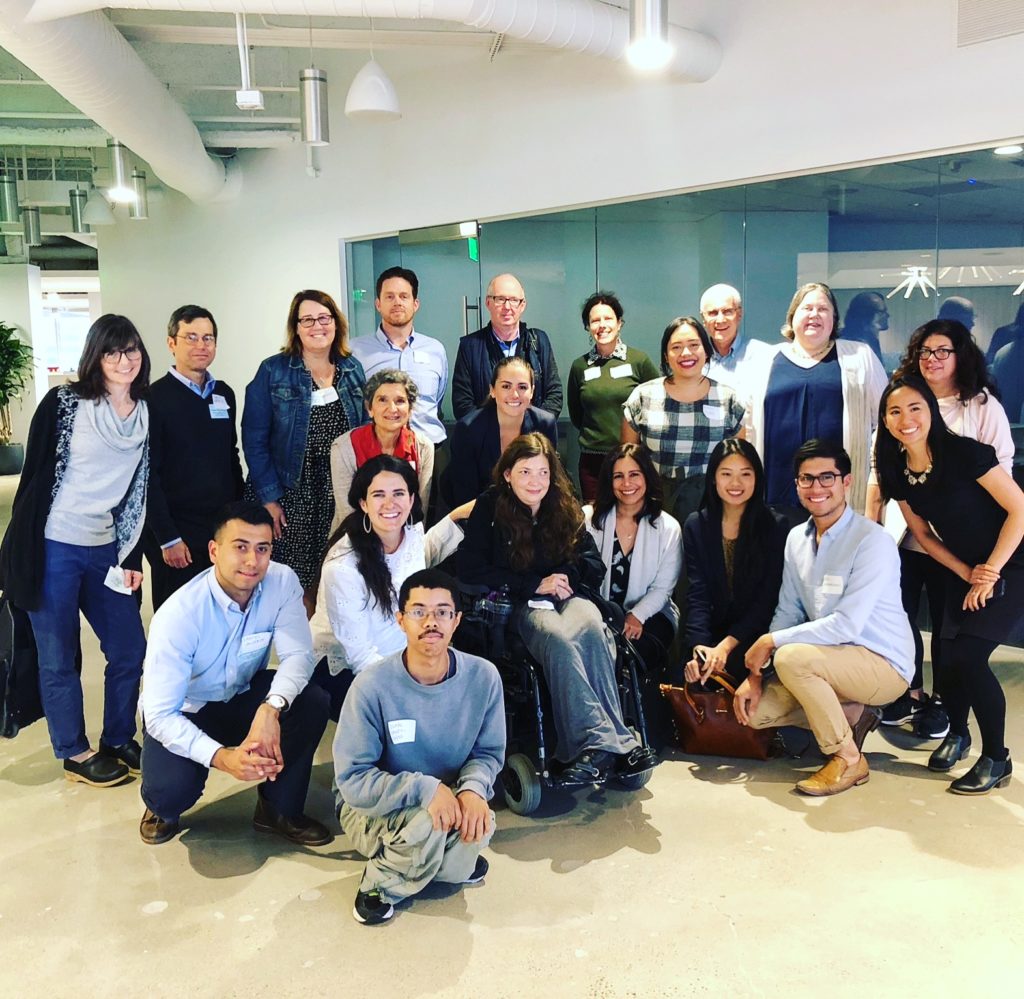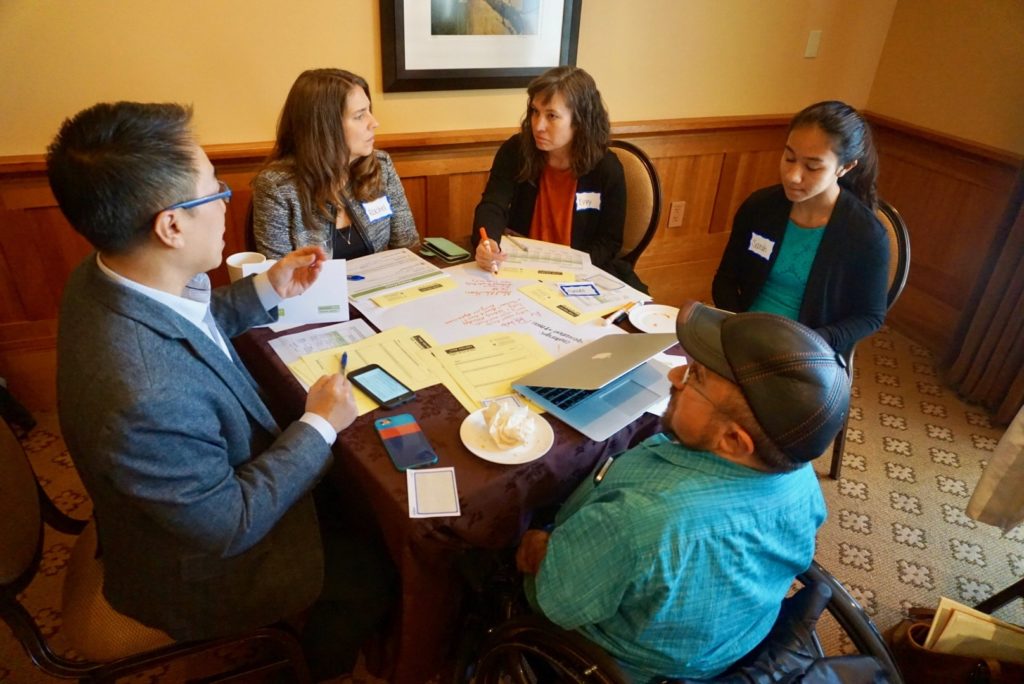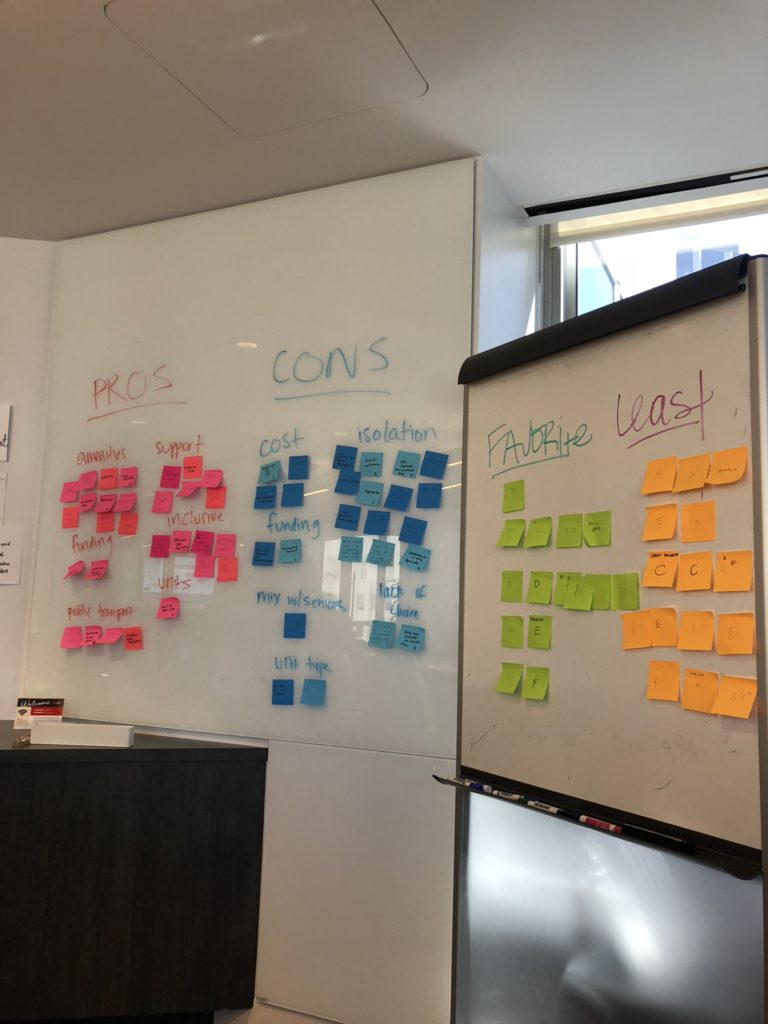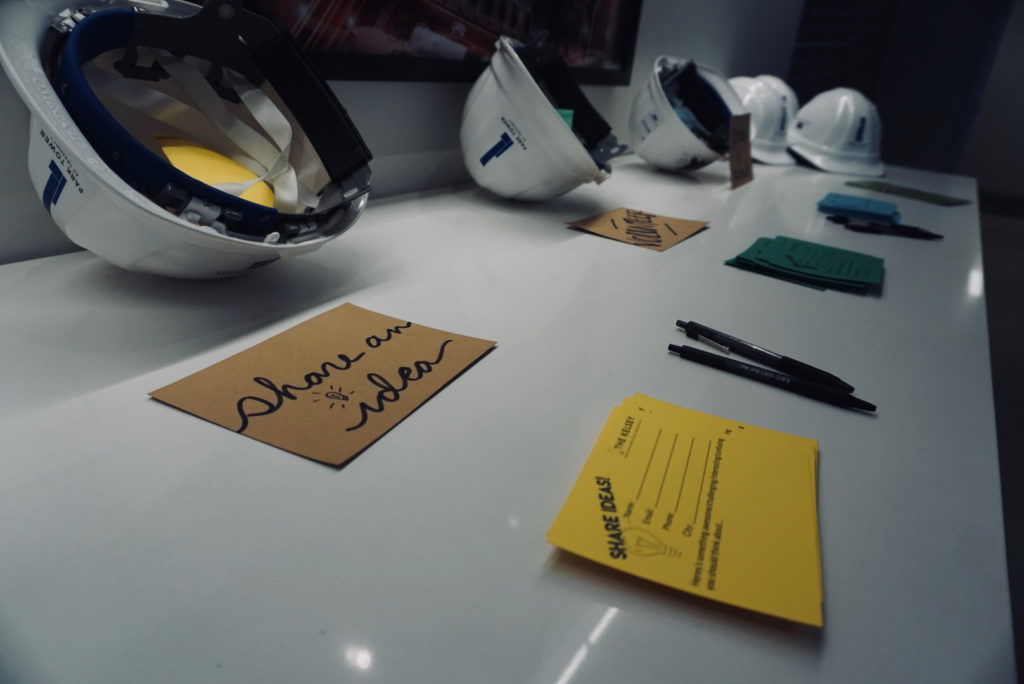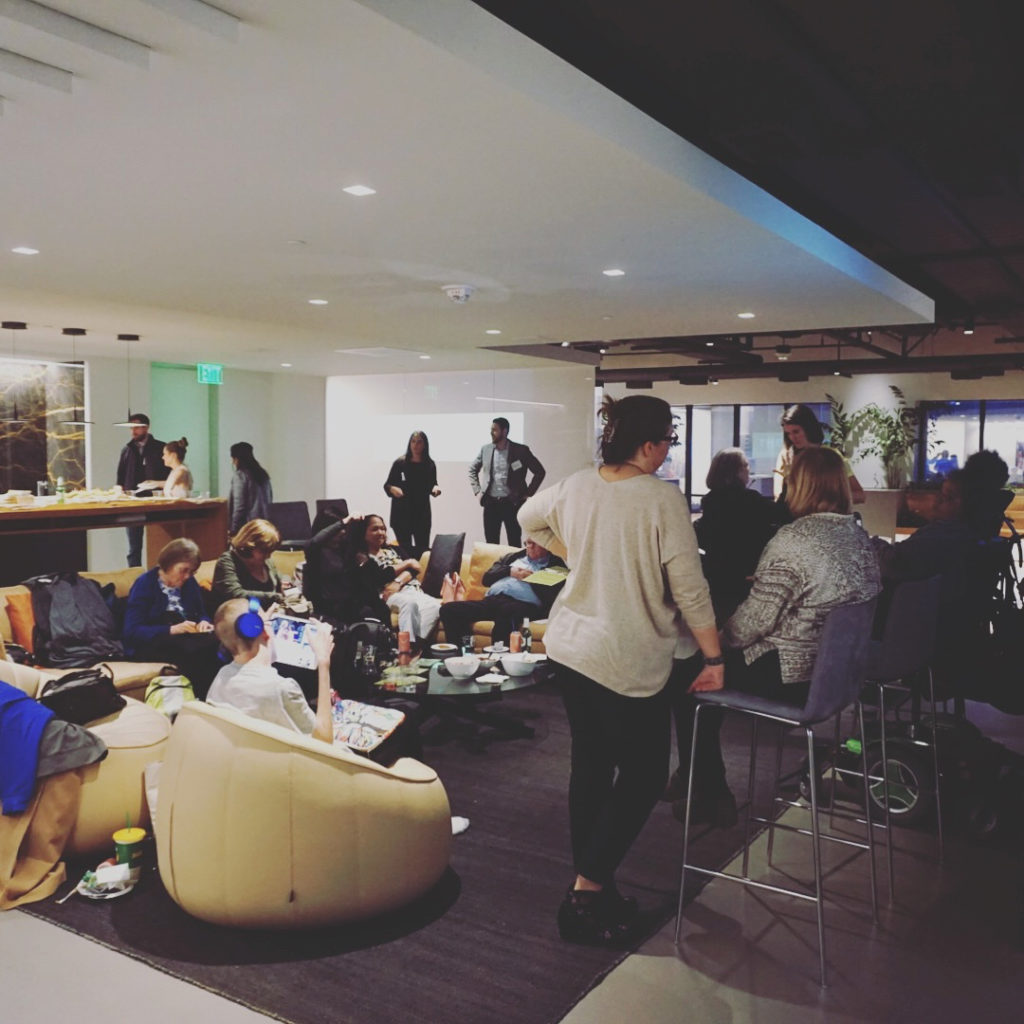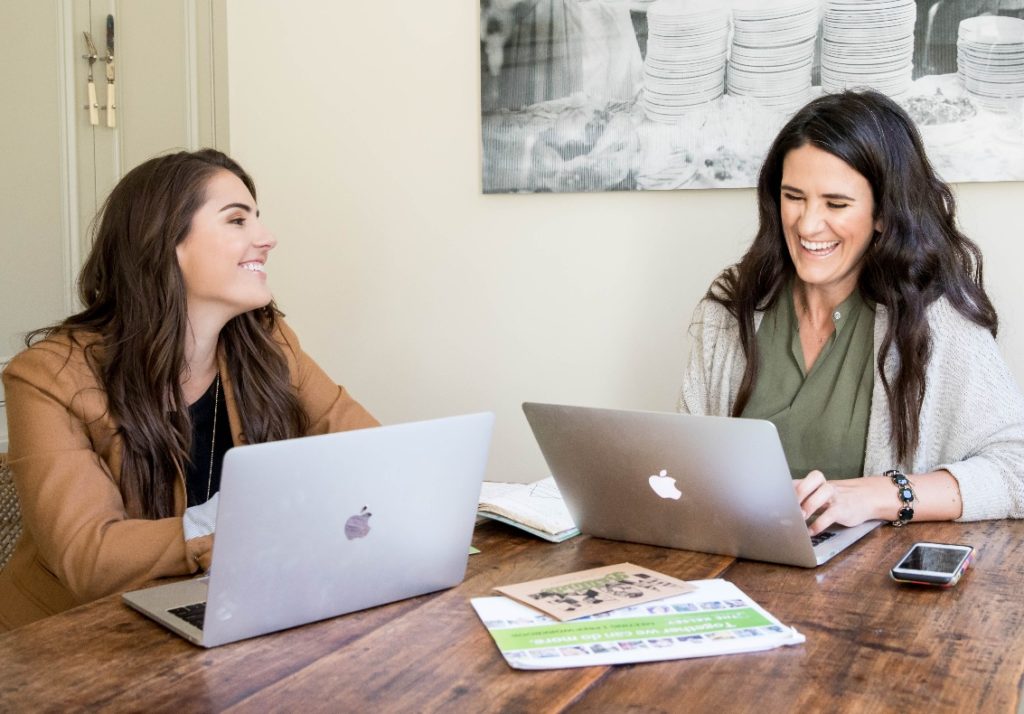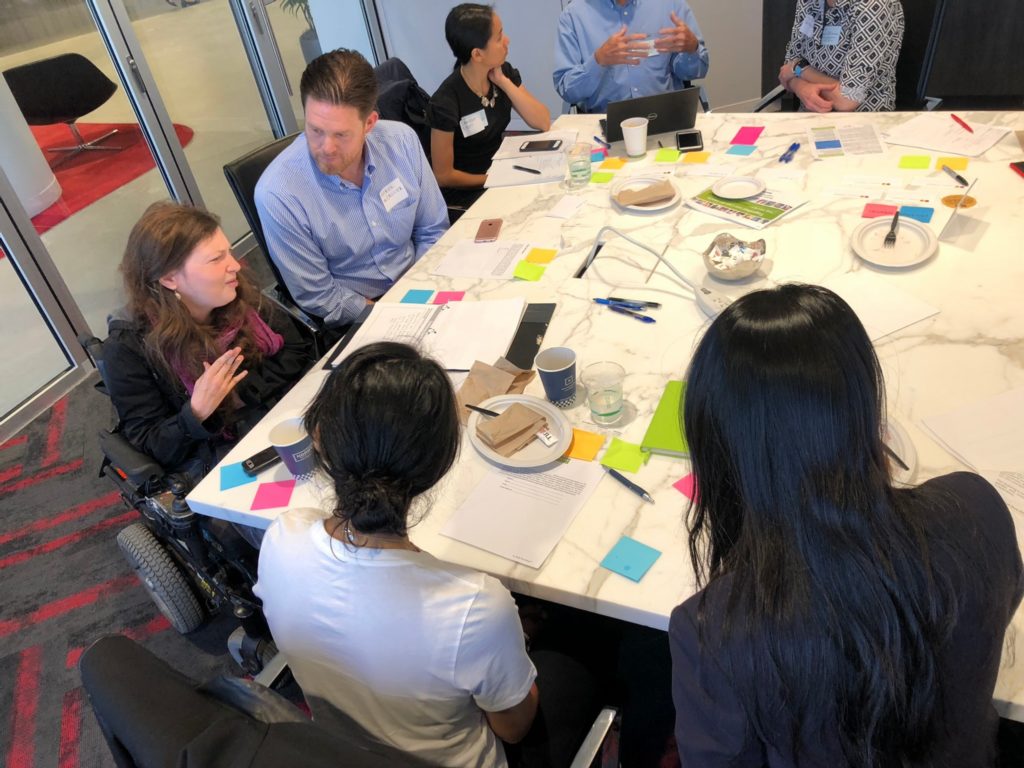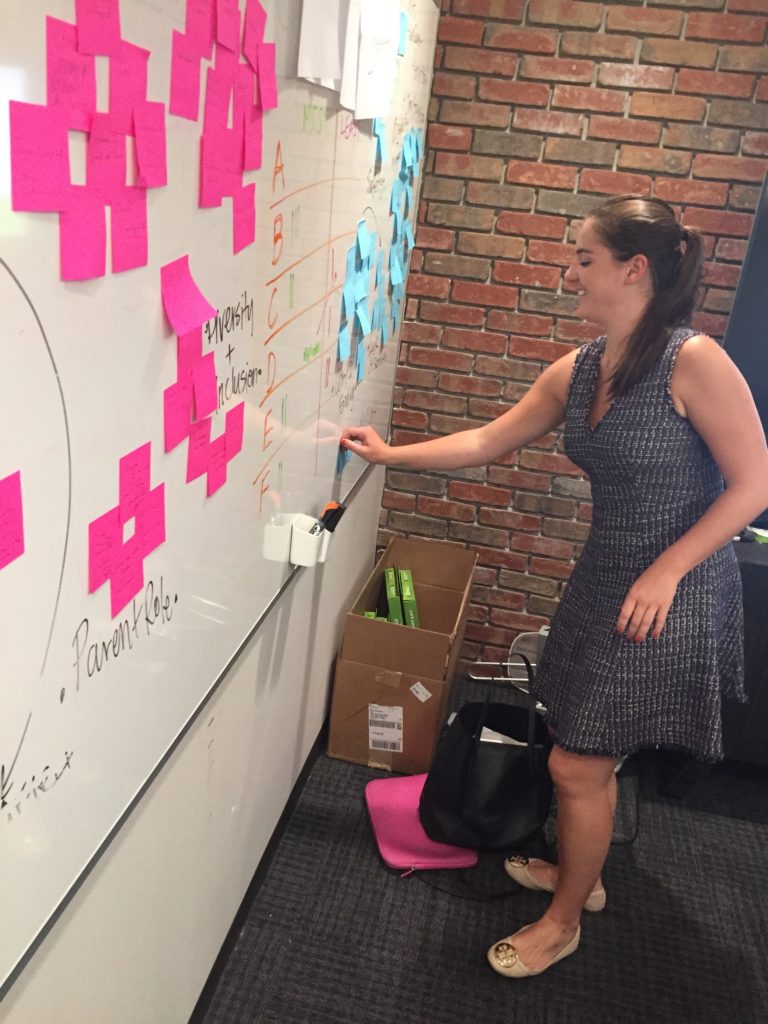I vividly remember the day I decided housing and community inclusion for adults with disabilities was the work I needed to be doing, and would likely spend the rest of my life working on.
It was almost five years ago. Families I worked within Unified Theater invited me to join them for an advocacy day at the Connecticut State Capitol around issues facing adults with disabilities. I showed up as the hearing was ready to begin and the room was already over-capacity. Advocates, families, and community leaders spilled out into the hallways. I squeezed myself in the corner and looked over suited shoulders as individuals, parents, siblings, caretakers, and community leaders pleaded with lawmakers to do something to address the needs of adults with disabilities. Parents talked about having to leave their jobs in order to care for their children with multiple significant disabilities. Advocates with disabilities shared their desire to work, to live independently, and to contribute to their communities. Siblings spoke to their concerns about what would happen to their brothers and sisters after their parents were no longer around. Community organizations serving individuals and families told stories of having to serve growing populations with increasingly limited resources. I was familiar with some of the issues through my cousin Kelsey, but at that moment as I began to understand this issue on a macro level, my obsession with community inclusion began.
This month marks one year working full-time on The Kelsey.
After years of research, incubators, and grad school projects, I formed a Board, filed our papers, and got to work. What a year it’s been — fun and challenging, and full of ideas and questions. Every day brings us closer to our goal of building a new model of inclusive community and permanently changing the housing sector to be a more inclusive one across ability and income.
In our business plan, we defined our approach by four words: Inclusion, Scale, Sustainability, and Partnership. Perhaps one of the best parts of reflecting on this first year is noting that those words — those values — are still at the core of everything we do.
Inclusion is the word we use most often at The Kelsey. In some ways, I’ve become even stauncher in my view that it is essential to do everything possible to ensure people with disabilities — even and perhaps, especially, those with challenging medical and behavior needs — are included in communities. Inclusive housing models reflect the preferences of advocates with disabilities, align with federal policy, and can ensure financial sustainability. As we have worked to educate the broader community on the housing issues people with disabilities face, I’m consistently disappointed (but not surprised) to find little awareness of disability issues from real estate professionals, policymakers, community leaders, and funders. If housing for people with disabilities separates and isolates these individuals, we also continue to keep them invisible. Working to ensure people with disabilities live visibly and are connected to their community through inclusive housing models ensures communities see and value people with disabilities.
Designing for scale continues to be fundamental to our approach. We’ve set a target to build 350 units of inclusive housing in the Bay Area by 2021. Our goals are ambitious but so is the scale of the challenge, so we’re working on how to plan, design, and fund for big impact. We’re also continuing to work on models that can be replicated in other communities and and open sourcing what we learn along the way for others to use in our Learn Center. I’m proud of our small but mighty team in their commitment to big ideas and big solutions.
When we used the word sustainability in our work, we have often focused on financial sustainability. We want to build housing that isn’t overly reliant on one funding source, is accessible to individuals at all incomes, and that we create financial model that would last for the long term. One exciting element of the last year has been adding environmental sustainability to our work. We worked with WRNS and Common on a proposal for the C40 Challenge in San Francisco that blended our inclusive model with environmental goals in a downtown residential project; we are excited to move on to the next round for that project. Architect and advocate Erick Miticken also educated us about the overlap between universal design and green design during our SPUR series on inclusive cities.
Partnership might be the work we’ve spent the most time on this last year. This fall we consulted on projects with the Bay Area Housing Organization and Mercy Housing California. We’ve supported events with keynotes for the Els Foundation, California Supported Living Network, Lanterman Housing Alliance, and Independent Futures. Since May, most of our work has been centered around our ‘Together We Can Do More’ Initiative funded by The Chan Zuckerberg Initiative. We’ve engaged with over 200 stakeholders in this work, learning from each of them and working with them to think through what strategies can be deployed to make communities more inclusive. We know one organization won’t, and shouldn’t, solve the disability housing crisis. We’re so grateful to be doing this work alongside passionate partners.
Questions still remain — ones we continue to contemplate on our own and with our partners. How do we design something replicable and scalable that still serves the diversity of needs and desires among people with disabilities? What role should parents and families have in developing new housing and how do we leverage their passion and care while acknowledging challenges around equity, paternalism, and culture? How can we blend public, private, and philanthropic funding sources or mix communities when some policies and structures often require their separation? Asking the right questions out loud and often, then spending the time to work through them, continues to be at the core of what we do.
As many of you know, Kelsey passed away unexpectedly this March. It was a loss I still can’t put into words. We miss her every day. Still, the light our ‘sunshine girl’ spread continues to shine brightly. We didn’t build The Kelsey with the intention that it would be a legacy organization, but we’re so proud to stand for so many of the values Kelsey lived out in her life. We know we’re stronger when we work together. We’re not afraid to move fast (“hammer down!”). We work hard but laugh a whole lot. We believe people are fundamentally good. And, more is our favorite word too. We know Kelsey has guided our success this year and will continue to do so for years to come.
This last year has taught us that the need for disability housing is great, but the opportunity to create inclusive communities is greater.
Thanks for being part of our journey. We’re in this together, because together we can do more.

